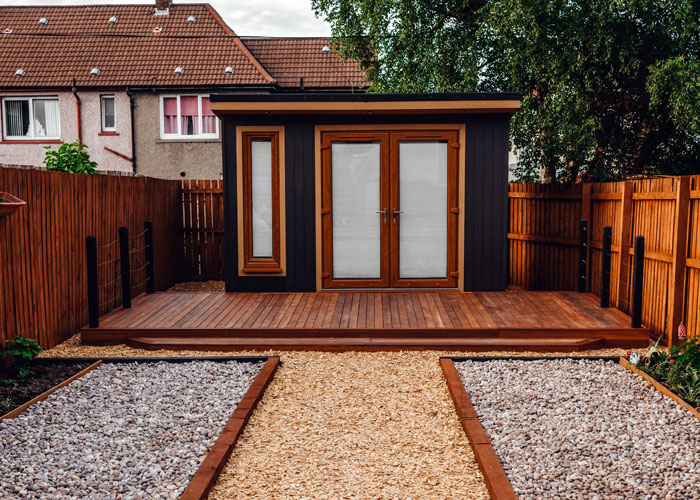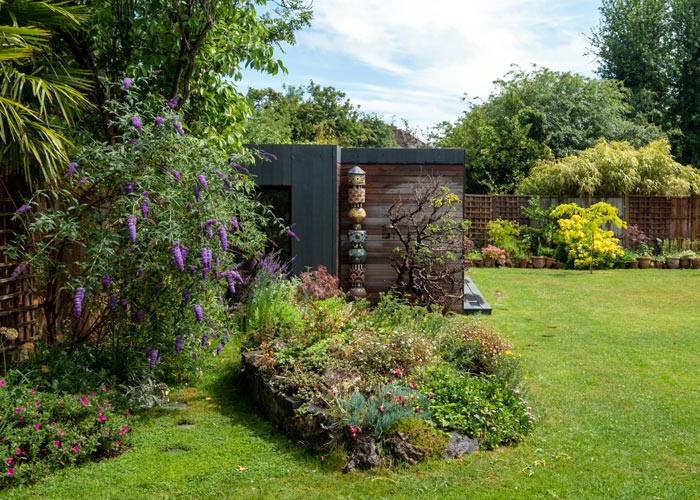Before constructing a building in your garden, you need to know which regulations to follow and what permissions you need, if any at all.
Then you can determine the best place to suit the size, shape and aspect of your garden, as well as the building’s intended use. Also, when deciding where to position your garden building, don’t forget to make sure you leave adequate space around it.
You will need enough room to install it safely, paint or apply preservatives, and complete any necessary maintenance work.
This article deals only with rights in accordance with residential houses. Different rules may be relevant in other situations or commercial settings.

Planning Permission
Before carrying out any major improvement work, or adding to your property, you need to consider the possible impact it could have on your neighbours and the environment. This will determine whether or not you will need to apply for planning permission.
Planning permission is usually required if you are building something new, or making a big change to your building, like an extension. But not all building projects will require special permissions, as they fall under the classification of ‘permitted development’.
Permitted Development Rights
Garden buildings generally fall under permitted development because they are separate from the main dwelling. This means you typically don’t need permission to construct a garden shed, summer house, garage or pet housing on your property.
However, there are several conditions that must be met in order for a building to comply with permitted development rights.
- The building is intended only for temporary or recreational use, and not for permanent sleeping or living accommodation. If you plan to use your new garden room as a full-time home office or business premises, you may need to check with your local authority.
- The total ground area of outbuildings, enclosures or extensions does not cover more than 50% of the land surrounding the original house.
- No part of the building is positioned in front of the principal elevation of the original house. The principal elevation is the side that fronts the main roadway or public footpath, and usually contains the house’s entrance or main architectural features.
- The building is only one storey. Buildings with more than one-floor level will require planning permission.
- The overall height of the building is not more than 4 metres if it has a dual pitched or hipped roof, or over 3 metres in any other circumstance. If it is within 2 metres of the property boundary, the height does not exceed 2.5 metres. The height is measured from ground level, up to the building’s highest external point.
- The height of the eaves is not over 2.5 metres. This is the measurement from ground level, up to the point where the lowest part of the roof meets the outside wall of the building.
- The construction does not include a balcony, veranda or raised platform more than 0.3 metres high.
Additional restrictions may apply if you live in or near any of the following:
- A listed building
- A designated area of outstanding natural beauty
- National park
- World heritage site
- Conservation area
What about Building Regulations?
Building regulations are something entirely different to planning permission, although they are often confused as being the same thing. Planning permission generally covers aspects of building in relation to the local area, eg. use of land, appearance, and how it affects others and the environment. Meanwhile, building regulations cover the more technical details and structural aspects of the construction.
Whether a building needs to comply with building regulations depends largely on its intended use. Any building designed to be lived in will need to follow strict regulations to ensure it is safe, efficient, and meets all relevant standards and certifications. This would apply to building work like new houses, extensions and conversions.
Outbuildings, such as sheds, summerhouses, log cabins, garages and greenhouses, will not usually need to follow building regulations. This is because they are detached from the house, and generally for storage space or leisure purposes. Although the floor area of the building must be under 15 square metres. If it is between 15 and 30 square metres, it must be sited at least 1 metre from any boundary or made mainly from non-combustible materials.
Conclusion
We hope this information helps give you a better understanding of what is involved when planning to erect a garden building. The task may not be as daunting as you first thought. But remember, it is only guidance and not exhaustive of all rules for all situations. If you’re ever in any doubt about your building project, then we recommend contacting your local council or planning authority.
There is a wide range of garden log cabins, sheds, and other outdoor structures, on the market, in various shapes, sizes and designs. You should have no problem finding something to fit your garden and requirements.
To give yourself more freedom on where to place items in your garden, look for a building that is under 2.5m high. This way you can fully maximise the space you have. This is because you don’t need to worry about leaving large amounts of room between the building and your property’s boundary. Try wooden garden building specialist Dunster House, they design their products with this in mind, so most of the log cabins in their extensive range are below 2.5m in height.
As long as you follow the rules for permitted development, you should not typically need planning permission for a garden building.





